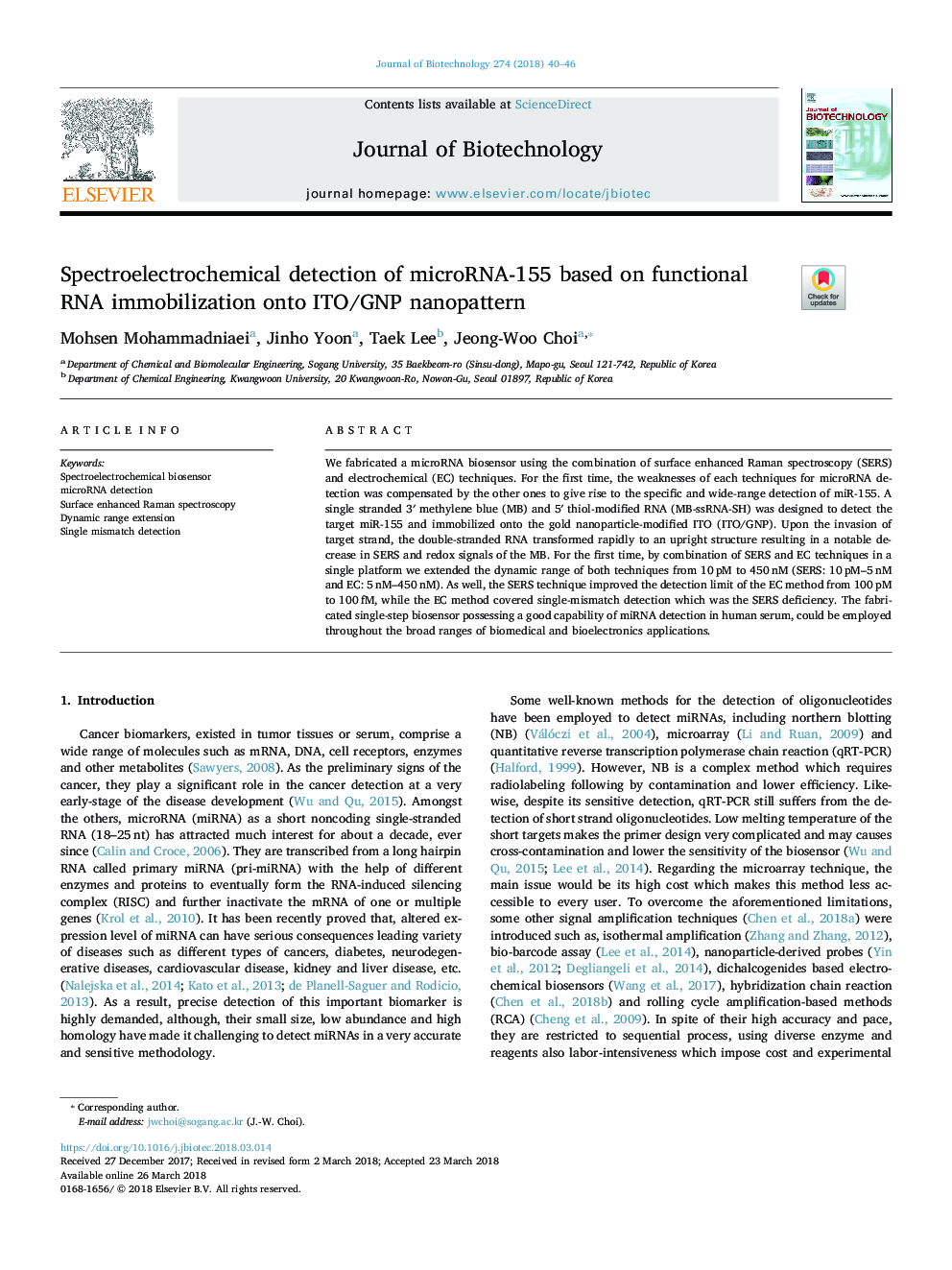| Article ID | Journal | Published Year | Pages | File Type |
|---|---|---|---|---|
| 6490324 | Journal of Biotechnology | 2018 | 7 Pages |
Abstract
We fabricated a microRNA biosensor using the combination of surface enhanced Raman spectroscopy (SERS) and electrochemical (EC) techniques. For the first time, the weaknesses of each techniques for microRNA detection was compensated by the other ones to give rise to the specific and wide-range detection of miR-155. A single stranded 3â² methylene blue (MB) and 5â² thiol-modified RNA (MB-ssRNA-SH) was designed to detect the target miR-155 and immobilized onto the gold nanoparticle-modified ITO (ITO/GNP). Upon the invasion of target strand, the double-stranded RNA transformed rapidly to an upright structure resulting in a notable decrease in SERS and redox signals of the MB. For the first time, by combination of SERS and EC techniques in a single platform we extended the dynamic range of both techniques from 10â¯pM to 450â¯nM (SERS: 10â¯pM-5â¯nM and EC: 5â¯nM-450â¯nM). As well, the SERS technique improved the detection limit of the EC method from 100â¯pM to 100â¯fM, while the EC method covered single-mismatch detection which was the SERS deficiency. The fabricated single-step biosensor possessing a good capability of miRNA detection in human serum, could be employed throughout the broad ranges of biomedical and bioelectronics applications.
Related Topics
Physical Sciences and Engineering
Chemical Engineering
Bioengineering
Authors
Mohsen Mohammadniaei, Jinho Yoon, Taek Lee, Jeong-Woo Choi,
